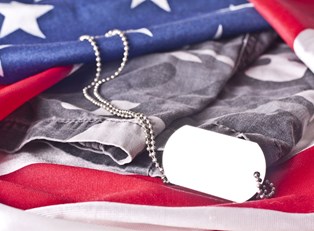Veterans United, the Federal Housing Administration, and other programs offer personal and home loans (mortgages) to veterans of the United States Armed Forces. This allows retired soldiers access to money to buy a home with lower interest rates, which makes a lower monthly payment. Many homeowners wish to revisit their loans—whether to take advantage of lower rates or because their credit has improved over the years—to see if these numbers can drop even further. The VA can also help you get a sort of reverse mortgage via a VA loan through refinancing to allow for updates or debt closure. Here’s a look at refinancing VA loans.
Who Qualifies for VA Loans/Refinancing?
Veterans groups have specific requirements for candidates who qualify for a VA loan or refinancing through veterans services. Veterans United Home Loans asks that “veterans, active duty service members, National Guard members, and reservists must meet the basic service requirements set forth by the Department of Veterans Affairs.” This generally means 90 days of consecutive active duty during wartime or 181 days during peacetime; 6 years in the National Guard or Reserves; or the spouse of a military member who died or was disabled on duty. If you aren’t sure if you meet these guidelines, talk to a VA representative.
Even if you did not qualify during your first mortgage application, you might now be able to refinance for better rates. Whatever the case, you’ll need a certificate of eligibility to make sure you’re eligible at some point in the loan process. Veterans United can even do this for you if you aren’t sure where to go.
Refinancing Options
There are two ways Veterans United can help you refinance a VA loan: the VA Streamline Refinance (IRRRL—Interest Rate Reduction Refinance Loan) or the Cash-Out Refinance. The IRRRL is more appropriate if you are looking for a lower monthly payment, The Streamline option doesn’t require an appraisal or a new certificate of eligibility, but your original mortgage must have been through the VA.
The Cash-Out option is best if you need some money in return for your equity. It also tends to come with lower interest rates, and you don’t have to ever actually use any of the cash available to you. Either refinance option can include additional fees that tend to be required in the refinancing process.
Eligibility
VA refinance eligibility is virtually identical to VA loan eligibility. The great thing about VA loans is that there is no minimum income requirement—but you are expected to be able to cover your expenses. However, the VA may use outside lenders. These lenders may have their own set of requirements in regards to credit, debt, and other factors. Additionally, different states may have varying regulations regarding refinancing, types of loans, and other aspects of the loan granting process.
Getting Started
If you have all your financials lined up, the best way to get started is to contact the Veterans United Home Loans. You can visit their website to get an estimate, or simply give them a call. They can help walk you through everything you need to know and make sure you understand the process before you even begin. When refinancing, remember that you want your credit to be as strong as possible, which means avoiding unnecessary or additional debt. Refinancing can be a great way to enjoy your own home while making the most of your income.




